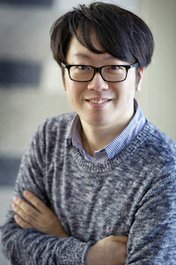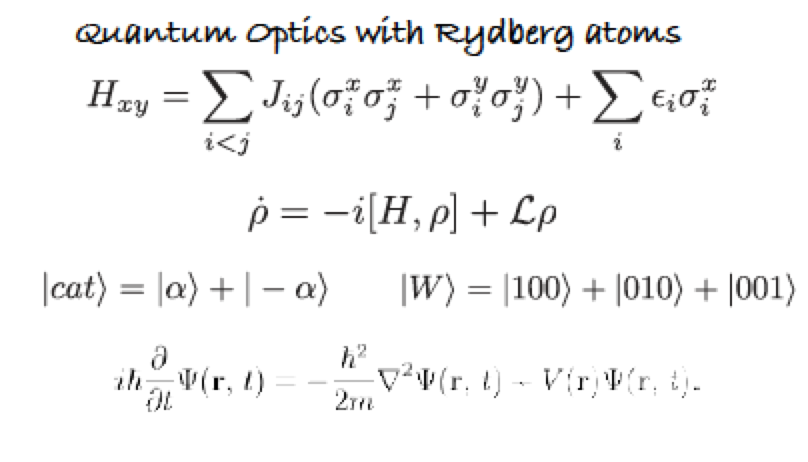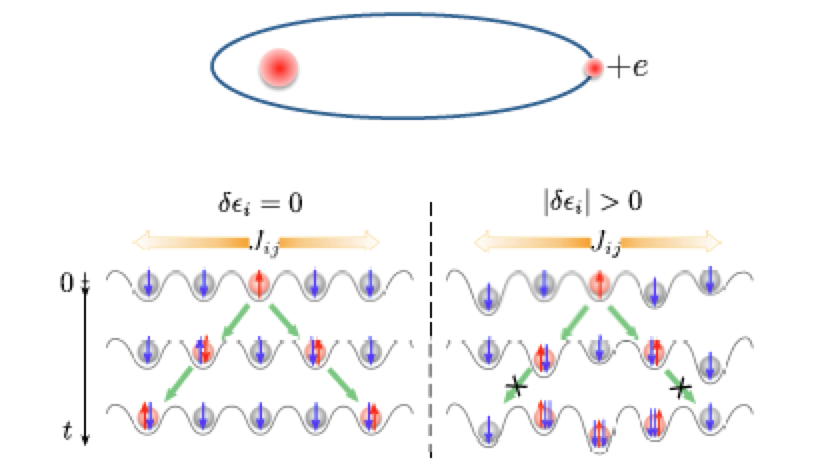The ‘proof’ is in the equation!
 Proof is highlighting Waterloo’s brightest and most talented in our Equation Series. Look for changes on our restaurant chalkboards as we feature a new genius in our area every few weeks.
Proof is highlighting Waterloo’s brightest and most talented in our Equation Series. Look for changes on our restaurant chalkboards as we feature a new genius in our area every few weeks.
Meet Kyung Choi an Assistant Professor at The University of Waterloo.
What is your theory about?
What is the connection from the microscopic theory of quantum world to everything that we experience in the classical realm? Entanglement and superposition states, as predicted precisely by quantum theory and observed by a number of experiments, are never encountered in our daily life.
This is the quest towards understanding how classicality may emerge from quantum particles, e.g., atoms and photons, as well as how we view certain macroscopic behaviors that cannot be explained even in principle from ordinary classical mechanics. Over a century ago, it was Einstein, Rosen, and Podolski, who raised the implication of quantum theory for the universe to the nature of reality and locality with a striking prediction for the entanglement between two quantum objects. This raises a question, “can we have entanglement grown to a macroscopic scale, which we would normally call classical, and manifests itself in a way we could actually observe… macroscopic quantum entanglement?” Through my work, I am trying to help elucidate these foundational questions that reveal the macroscopic quantum nature of our world.
 My equation describes a theory for atoms with exaggerated properties enabling this quantum circus. These super-atoms, known as Rydberg atoms, can have a substantially large range for the inter-atomic interaction, and allow one to coherently mingle bunch of atoms whose Hilbert “space” is actually much larger than the number of atoms in the observable Universe. This would allow us to produce an observable glimpse of quantum states at a macroscopic scale heretofore not possible in the ordinary classical world. Wouldn’t it be awesome to talk to a million atoms all dancing and marching in harmony like a single quantum mechanical object?
My equation describes a theory for atoms with exaggerated properties enabling this quantum circus. These super-atoms, known as Rydberg atoms, can have a substantially large range for the inter-atomic interaction, and allow one to coherently mingle bunch of atoms whose Hilbert “space” is actually much larger than the number of atoms in the observable Universe. This would allow us to produce an observable glimpse of quantum states at a macroscopic scale heretofore not possible in the ordinary classical world. Wouldn’t it be awesome to talk to a million atoms all dancing and marching in harmony like a single quantum mechanical object?
Why does it matter?
Quantum theory describes the microscopic world, which contradicts our daily life. On the other hand, black hole physics and cosmology are pursuing the frontier of classical physics. In between, you have condensed matter physics. For physics to work at all length and energy scales, there must be a coherent and consistent theory that transits from the counter-intuitive microscopic theory to the macroscopic model of the classical world. Here, I am attempting to bridge the physics from the manifestly quantum realm of one atom and one photon, to the seemingly mesoscopic world of condensed matter and transport physics, to the macroscopic (e.g., quenched quantum dynamics of the initial universe by quantum fluctuation). Rydberg atom physics allows us to test certain models and simulate exotic situations, which might occur in these settings.
Why did you become a physicist?
As early as I could remember, my dream was to do something about the universe. In my childhood in the 80’s, I was a young boy running around the parks and playgrounds of California. One day, I went to the Lawrence Hall of Science, where I discovered the original Apollo 11 spacecraft on display. It was a thrilling experience that continued through my elementary, middle school, and high-school career.
Both of my parents being professors in science and engineering, they tried to foster a sort of scientific culture in the family and in the upbringing of their kids. As I grew older (maybe middle school), I learned that quantum physics was a very strange subject. Perhaps, it was not exactly the same kind of universe I imagined in my early days, but I found a whole new cosmos in the microscopic quantum world. Tantalizing properties of our quantum world emerge out of their Hilbert spaces, and continue to be mind-boggling even after a century ago since its initial formulation.
I love my job 🙂
What’s the best part of being a physicist?
I think that it’s hard to find people who are so zealous about their work as a physicist. Doing physics, in my view, is not just working in a profession. In some ways, it’s a method of living your life. The kind of integrity that we keep is not typical even among scientists, and this attitude towards life continues beyond our academic circle. Working together days and night on a challenging project brings a whole new level of appreciation of colleagueship. In a sense, my scientific colleagues and siblings are my academic family, with whom I would interact throughout life. It turns out that I have met my sweetheart in this way.
What’s your favourite meal?
I love Mediterranean pizza. When I was a graduate student at Caltech, I went to a local pizza restaurant with lab partners and frequently ate this pizza. Whenever I get the chance, I try to treat myself with the pizza and feel nostalgic about the fond memory in California.
I also love Pat-bing-su, a Korean ice shaved dessert with sweet Adzuki beans and milk. I rarely find these sweeties in North America, so whenever I find these yummies in South Korea or Japan it’s a super great treat!


